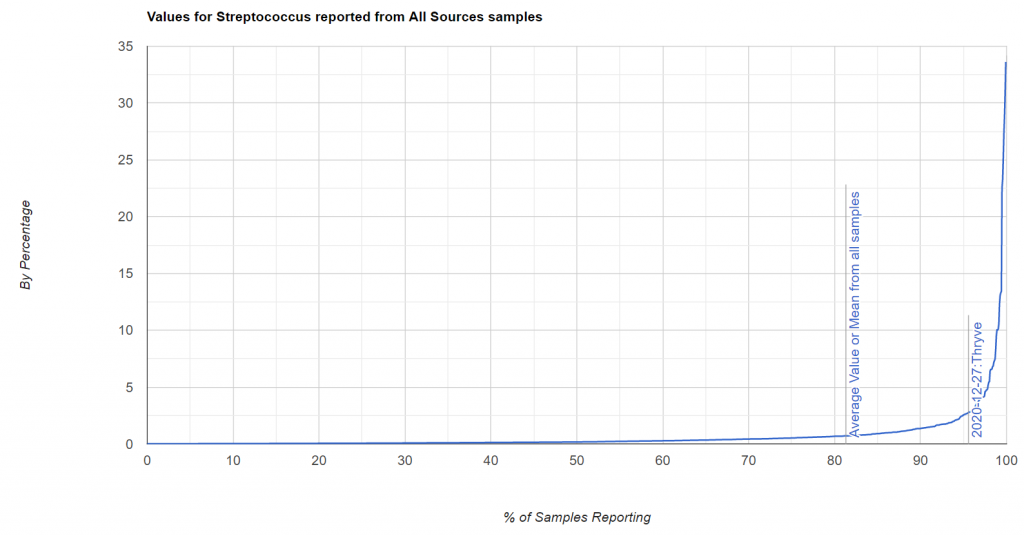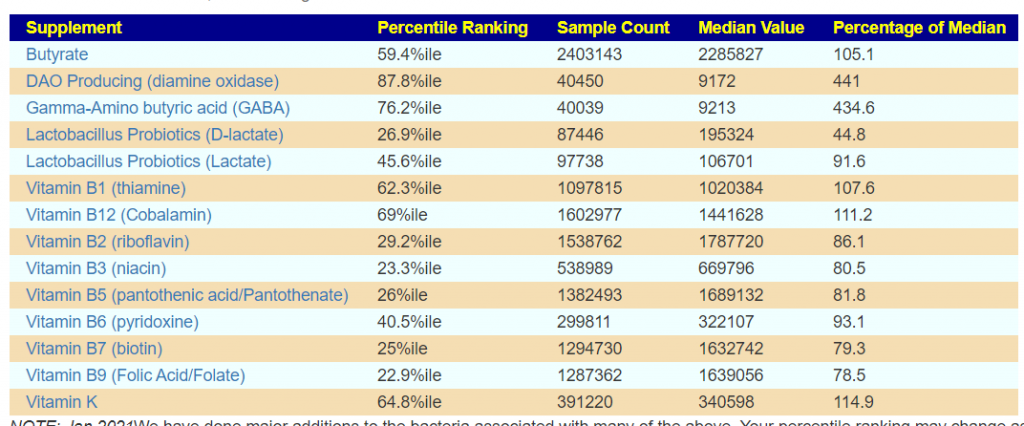This is an analysis using a standard flow that I tend to use… The analysis was done using data from Thryve and uploaded to Microbiome Prescription.
Microbiome Functional Abnormalities
With the recent addition of KEGG information, my focus has shifted from a naive “this bacteria is too high or too low” to this enzyme or end-product is too high or too low. Why? Bacteria can substitute for each other.
Consider building a wall on a house. If you grow up in the US. Northwest, it will be 90% wood and 10% gypsum board. But walls may be built with steel framing, concrete siding, bricks, stones, logs, concrete blocks etc. Is a wall not built of 90% wood unsafe? No, the question should be how does the wall function for structure strength, insulation etc. It is the same with bacteria.
Three Functional Checks

End Product Abnormalities

At this point, the reader should copy and google information about each end product.
- “Indole may act as an interspecies signaling compound.” [src] translation: the bacteria internet is flaky
- Biogenic amines – these are neurotransmitters
- Bacteriocin: Lasso peptide – “It has varieties of biological activities, among which the most important one is its antibacterial efficacy.” [src] in other words is suppresses other bacteria
So the story appears to be bad communications between bacteria and the microbiome being bias towards those that tolerate the natural antibioitic, Bacteriocin: Lasso peptide.
Clicking thru to the bacteria involved, we find that the antibiotic effect is due to one bacteria, shown below. The Indole appears to be due to low Alistipes level (most common source, and has a low value)


I dropped filtering to 90% and only the enzymes show issue.
Core Supplements
The purpose of this is to identify items that may compensate for low amounts. There were none.

Predicted Symptoms
There was only one item that had strong likelihood:
Impaired Memory & concentration|Neurological-Vision: Blurred Vision|
Pub Med Microbiome Reports
Cerebral palsy is not in my existing list of medical conditions, so I did a pub med search and found just two studies.
- The effect of different dietary structure on gastrointestinal dysfunction in children with cerebral palsy and epilepsy based on gut microbiota [2021]
- “The gut microbiota of children with CP and epilepsy consuming a liquid diet had elevated levels of symbiotic pathogens and diminished intestinal barrier protection bacteria, relative to a general diet group. These differences in bacterial microbiota were associated with GI dysfunction symptoms.”

“The increased risk of “Neurodegenerative diseases” in CPE patients was probably attributed to Streptococcus, Parabacteroides, and Bacteroides ” [2019]
I added CP to the database with the bacteria shifts reported. And then ran for matches to the reported patterns


The top results for probiotics are shown below

In terms of diet additions:

As well as:

And diet avoidance

We note that some species of lactobacillus are on the to take and others to avoid. Different species produce different bacteriocins (natural antibiotics against other bacteria)
Bottom Line
The above changes will likely have a positive impact and should slow neurodegeneration. As always, these suggestions should be review by knowledgeable medical professional before starting. These are machine learning suggestions that is blinkered in terms of factors considered.
Recent Comments